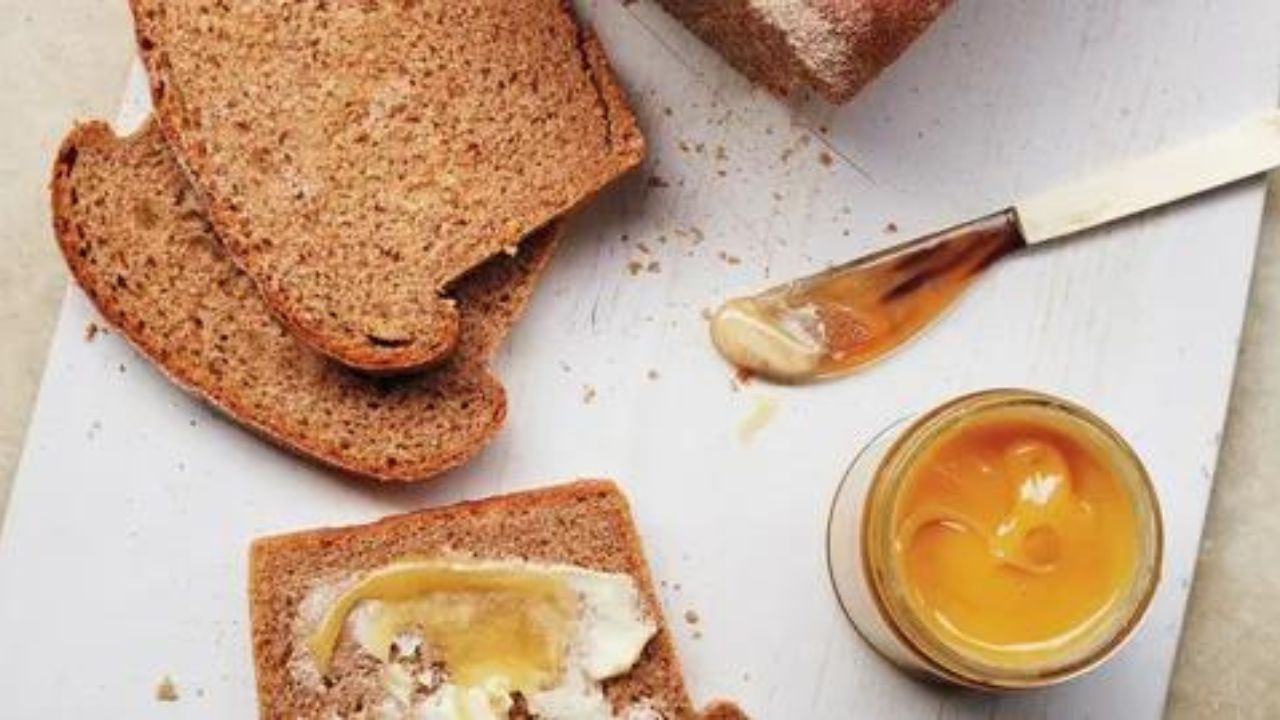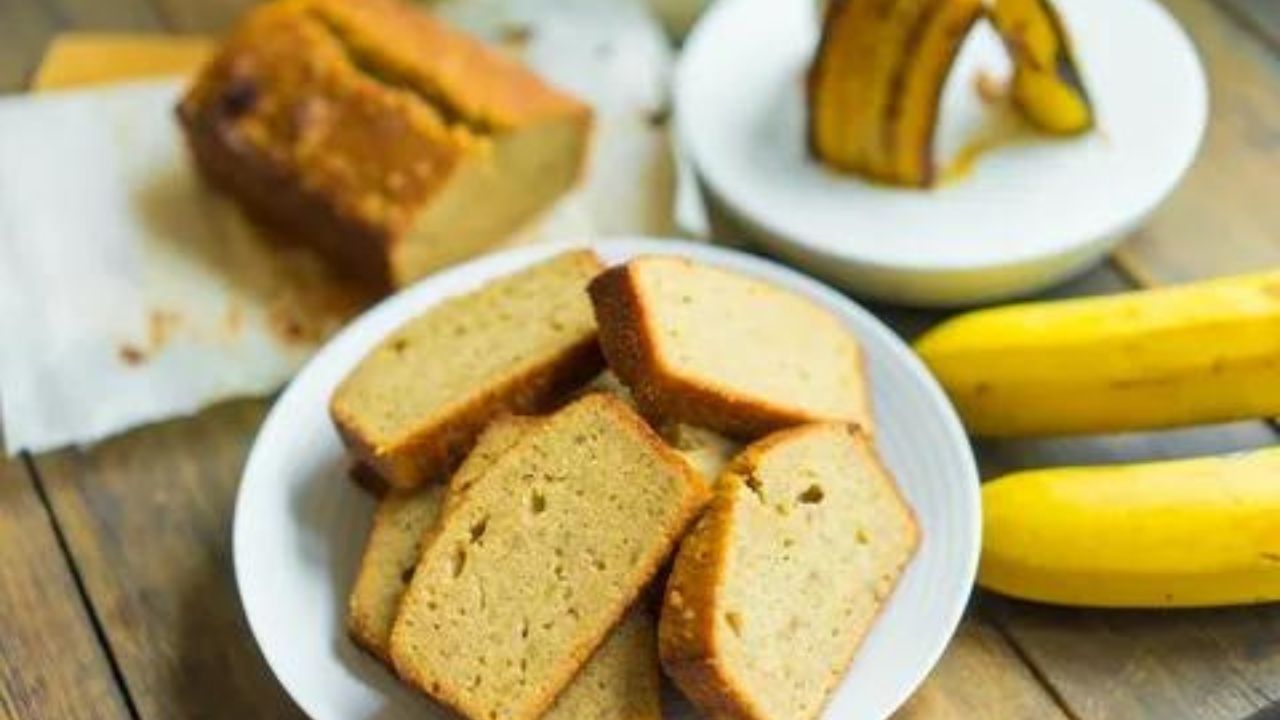If you give your dog sweet bread like banana bread, check the ingredient label for xylitol, a sugar substitute found in some baked goods. Xylitol is extremely toxic to dogs. Even in small amounts, it can cause low blood sugar, seizures, liver failure, and even death for your pup.
Dogs have a knack for sniffing out tasty treats, and it’s not uncommon for pet owners to wonder about sharing their food. One such query concerns sweet bread—tempting, aromatic, and often within reach on kitchen counters. But should dogs indulge in this delightful human snack? Let’s delve into the world of sweet bread and its compatibility with our canine companions.
Dogs Eat Bread And Butter?

Butter contains salt. Too much salt may lead to sodium ion poisoning, which can result in vomiting, diarrhoea, depression, tremors, increased temperature, seizures, and even death.
While a small dose of butter isn’t going to kill your dog, you could get some smelly farts and some nasty cases of diarrhoea. Milk and dairy products can cause digestive problems and trigger food allergies.
The Good for Dogs With Upset Stomachs?
You may have heard people tell you that bread is good for dogs with upset stomachs. While this may sometimes be the case, the Merck Veterinary Manual recommends feeding a bland diet of rice and boiled chicken for dogs with upset stomachs or, better yet, calling your veterinarian for expert advice.
Can Dogs Eat Sweet BreadAs with table scrap, bread adds calories to your dog’s diet. If your dog is overweight, talk to your veterinarian about moderating their diet and discuss a plan to keep them healthy, happy, and active. Bread packs a high glycemic punch and is high in calories, so feed your dog only very small pieces of bread at a time to avoid obesity-related diseases like diabetes.
The Good Bread:
Can Dogs Eat Sweet bread? Sweet bread encompasses a wide array of baked goods. From cinnamon rolls to banana bread, these treats are rich in sugars, fats, and various flavours, making them irresistible to our taste buds. However, the ingredients that make sweet bread so delectable for us might not align with a dog’s digestive system.
Their Impact on Dogs:
Sugar: Sweet bread typically contains sugar in various forms—granulated, brown, or even syrups like honey. While small amounts might not harm your dog, excessive sugar consumption can lead to obesity, dental issues, and, in some cases, diabetes in dogs.
Flour: The main component of bread, flour, isn’t inherently harmful to dogs. However, some dogs might be sensitive or allergic to wheat or gluten found in certain types of bread. This sensitivity could lead to gastrointestinal issues like vomiting or diarrhoea.
Yeast: Bread dough often contains yeast, which poses a significant risk to dogs. When ingested, the yeast continues to ferment in the warm, moist environment of a dog’s stomach, causing painful bloating and potentially leading to a life-threatening condition called gastric dilatation-volvulus (GDV).
Raisins or Grapes: Certain sweet bread varieties might contain raisins or grapes, which are highly toxic to dogs and can cause severe kidney damage even in small amounts.
Is Bread Safe for Dogs to Eat
The short answer to the “can dogs eat bread?” is yes. Dogs can safely eat bread in much the same way as humans—in moderation. Plain white and wheat bread are generally safe for dogs to eat, provided they don’t have any allergies, and it usually does not cause stomach upset.
Can Dogs Eat Sweet Bread Feeding your dog bread as a treat now and then won’t hurt them, as long as they are fed a complete and balanced diet and get plenty of exercise. It also won’t help your canine. Bread is a filler food and does not contain any nutrients not already supplied by your dog’s food. As anyone who has ever considered going on a diet knows, bread is full of carbs, which can put your dog on the path to obesity if you are not careful.
Things About Banana Bread For Dogs

Have you ever sat down with a slice of banana bread, only to have your four-legged friend beg with puppy dog eyes? When you make a dog banana bread, you can give your pup a slice to enjoy.
Giving your dog their slice of banana bread makes it feel like they are sharing snack time with you, and it’s good for your dog, too. It’s made with natural ingredients, which are fantastic for your pet’s health.
The high sugar content of human banana bread makes it bad for dogs, causing many health problems, including diabetes and weight gain. It’s especially not good for diabetic dogs.
Homemade banana bread ensures there are no artificial sweeteners in it. It’s important because one sweetener, xylitol, is highly toxic to dogs and can cause liver failure.
The Best of Feeding Sweet Bread to Dogs:
Can Dogs Eat Sweet Bread While an occasional nibble of plain bread may not pose a significant threat to your dog, consistently offering sweet bread or large quantities of it can result in various health concerns:
Digestive Discomfort: Sweet bread’s rich components, especially sugar and fats, have the potential to upset a dog’s stomach, triggering diarrhea, vomiting, or constipation.
Weight Issues: Regular intake of high-calorie, sugary treats like sweet bread can lead to obesity in dogs, fostering joint complications, heart ailments, and a shortened lifespan.
Allergic Responses: Dogs may develop allergies or sensitivities to specific ingredients in sweet bread, manifesting as skin irritations, itching, or digestive disturbances.
Toxicity Risks: Certain sweet bread recipes contain ingredients like raisins or grapes that are toxic to dogs, potentially causing severe health complications.”
Alternatives and Safer Options:
If you’re keen on sharing a snack with your furry friend, consider these safer alternatives to sweet bread:
Plain, unseasoned Bread: A small piece of plain bread, without any added sugars, spices, or potentially harmful ingredients, is a safer option for dogs in moderation.
Dog-Safe Homemade Treats: Explore homemade treat recipes specifically designed for dogs, using ingredients like peanut butter, pumpkin, oats, or carrots. These offer a healthier and dog-friendly snack option.
Commercial Dog Treats: Opt for commercially available dog treats specifically formulated to meet canine dietary requirements. Always check the ingredients and consult your vet to ensure they suit your dog.
Conclusion:
While the occasional nibble of plain bread might not immediately threaten your dog, sweet bread, with its rich ingredients and potential hazards, is best avoided. The risks of digestive upset, obesity, allergic reactions, and toxicity outweigh the momentary pleasure of sharing this treat with your furry companion.
FAQ
Is Bread With Sugar Good for Dogs?
Avoid feeding raw bread to dogs. The yeast and sugar in the raw dough ferment in the stomach, which can cause gas and extreme bloating. In severe cases, this can cause a stomach rupture and cardiovascular trouble or damage the diaphragm.
What Kind of Bread is Safe for Dogs?
The short answer to the “can dogs eat bread?” is yes. Dogs can safely eat bread in much the same way as humans—in moderation. Plain white and wheat bread are generally safe for dogs to eat, provided they don’t have any allergies, and it usually does not cause stomach upset.
What Happens if My Dog Eats a Sweet?
Table sugar and modern sweeteners, on the other hand, are not natural to dogs. Ingestion of granulated sugar may cause stomach upset and an imbalance of the bacteria that live in the gut. If your furry friend eats sugar, you might see vomiting, diarrhoea, gas, and discomfort.
Can Dogs Eat Sweetness?
According to the ASPCA, if your dog eats candy that’s high in sugar, it can cause vomiting and diarrhoea. Sugar also contains empty calories (meaning it provides no nutritional benefits), which can lead to extra calories and weight-related health conditions such as obesity. Sugar-free treats are off-limits, too.

